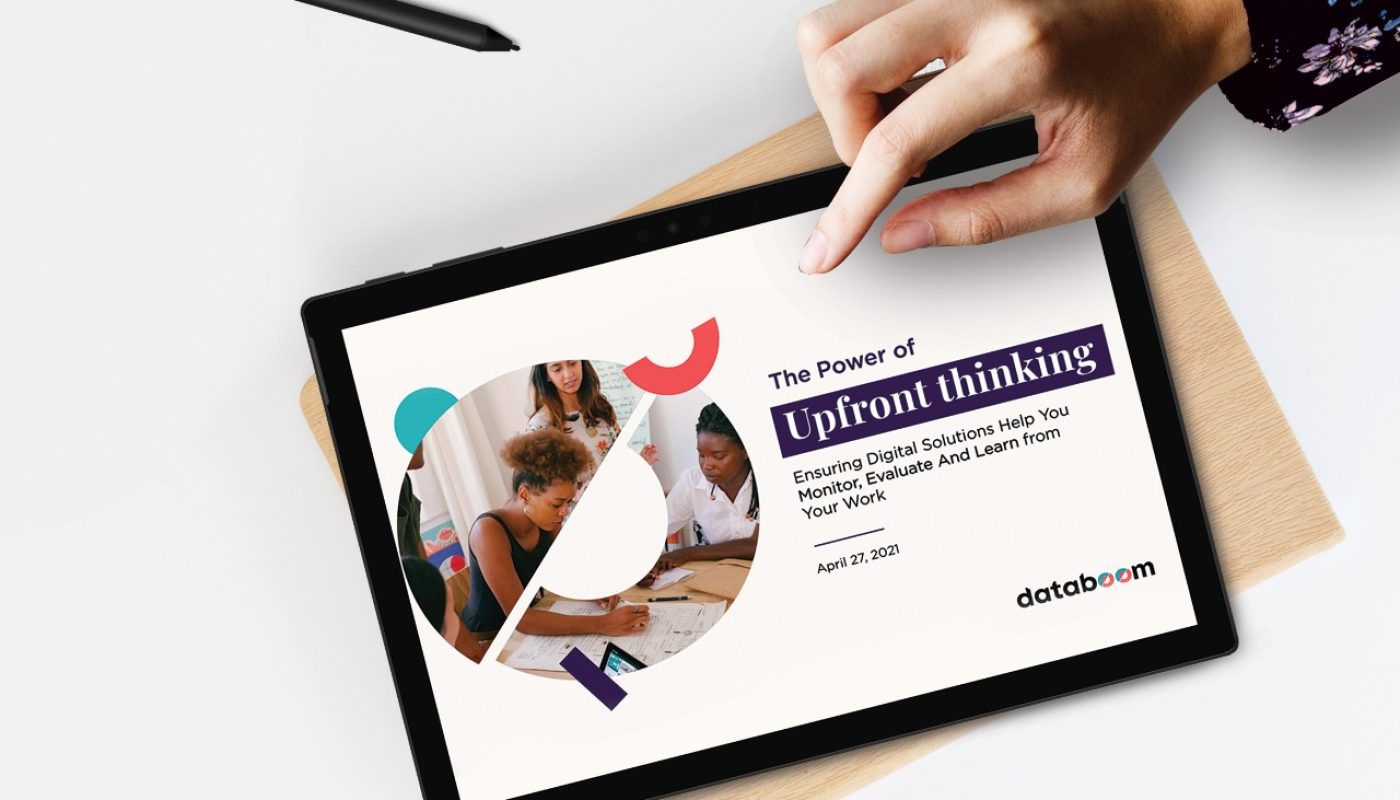The two most common mistakes we see organizations make when creating a monitoring, evaluation, and learning (MEL) system involve a lack of Upfront Thinking: 1) measurement is disconnected from strategy; and 2) there’s a rush to build digital data solutions, including dashboards, without defining the problem that’s being solved.
During this session at the Global Digital Development Conference (Apr 27- 29, 2021), participants learned why it’s good practice to invest in Upfront Thinking before building a MEL system. Participants also received two tools – a logic model and logframe – to guide upfront thinking and maximize data use and learning. You can find templates and guidelines on how to use Upfront Thinking tools below.

Logic Model
A Logic Model zooms in on the specific pathway that your program will tackle. A logic model portrays a neat, orderly structure for a particular pathway of change, which makes it easier for you and your donors/stakeholders to monitor program implementation. The Logic Model should be updated when you revise your strategy or when you add several new types of projects to your portfolio.
Logframe
A Logframe is a table that provides an overview of a project’s goal, activities, anticipated results, and assumptions – it is a planning tool. A logframe specifies the components of a project and its activities and how they relate to one another. A logframe also identifies the measures by which the project’s anticipated results will be monitored. You should update results on a routine basis and use the logframe for project monitoring. Logframes can also be used to generate “views” and organize data for digitized dashboards.
Explore our presentation at the GDD Summit 2021
Watch the recording
The Power of Upfront Thinking: Ensuring Digital Solutions Help You Monitor, Evaluate AND Learn from Your Work. (Apr 27, 2021).



